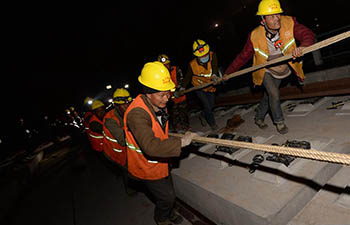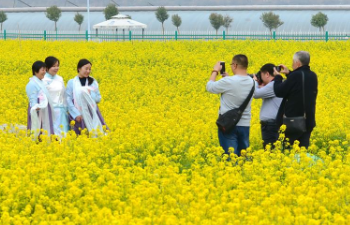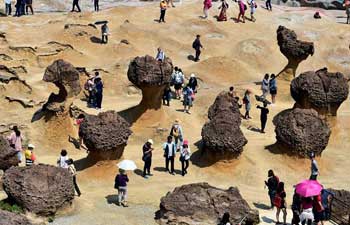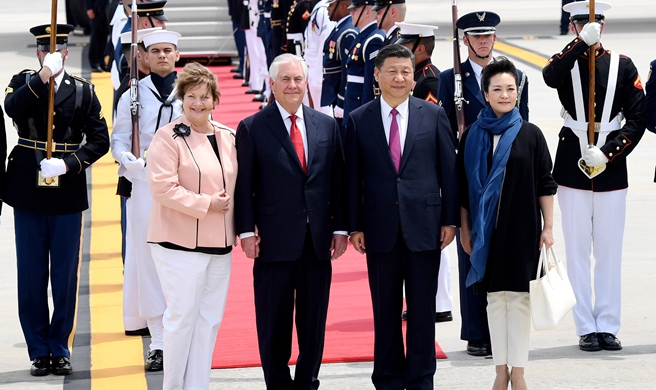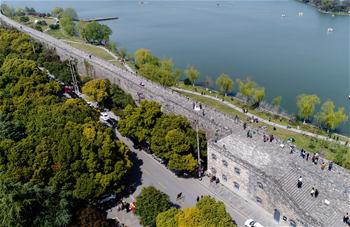LHASA, April 7 (Xinhua) -- "In winter, power cuts have lasted more than 10 days," said Pema Yangzom from her home in Bumba Tsal, a village in southwest China's Tibet Autonomous Region. "But since being hooked up to the new power grid, power cuts are a thing of the past."
The central authorities have increased investments in constructing and upgrading power supply and transmission facilities in Tibet in the past years.
Construction on the latest project started Thursday in Nyingchi city in Tibet -- the world's highest power transmission project.
The project includes the construction or upgrade of 16 110-kv substations and transmission lines, with a total length of 2,738 km. The average altitude is 3,750 meters, with the biggest altitude gap of 494 meters between two adjacent transmission towers.
It also includes power supply facilities for the railway between Lhasa, the regional capital, and Nyingchi. The Lhasa-Nyingchi section of the Sichuan-Tibet railway began construction in December 2014.
"Construction here is extremely complicated, due to the fragile eco-system," said Wang Shuxiang, an official with the project. "The complex terrain and changeable weather leave us only six months' construction period a year."
The grid will be completed in 2018.
Currently, the backbone grids in Tibet are not all interconnected, meaning the network is unstable. Like Bumba Tsal, many villages still have to put up with power cuts.
"More than 100,000 people in three counties in Nyingchi will benefit from the project," Wang said.
The 16.2 billion yuan (2.35 billion U.S. dollars) transmission project accounts for 50 percent of all spending on grid projects in Tibet.
"The project will attract investment, generate more employment opportunities and tax revenue," said Shu Yinbiao, chairman of the State Grid.
Tibet's hydropower reserves can, theoretically, generate 210 million kilowatts of power, accounting for 29 percent of China's total hydropower reserves, ranking first nationwide.
"The project would assist with the transmission of Tibet's clean energy to other places," Shu said, adding that Tibet is one of the country's most important strategic resource reserve bases.
Tibet has seen rising power consumption in recent years. In 2016, power consumption hit more than 4.1 billion kilowatts, a growth of 21.8 percent year on year.
To meet rising power demands and to ensure stable power supply, from 2011 to 2015, the State Grid spent 27 billion yuan on power projects, connecting Tibet's grids to those in Sichuan and Qinghai provinces and connecting 480,000 people in Tibet to electricity. By 2020, Tibet will complete the construction of interconnected grids across the region.
"The stable power supply will bring great convenience to our life. I plan to expand my hotel and open a Tibetan meal restaurant next year," said Pema Yangzom.





